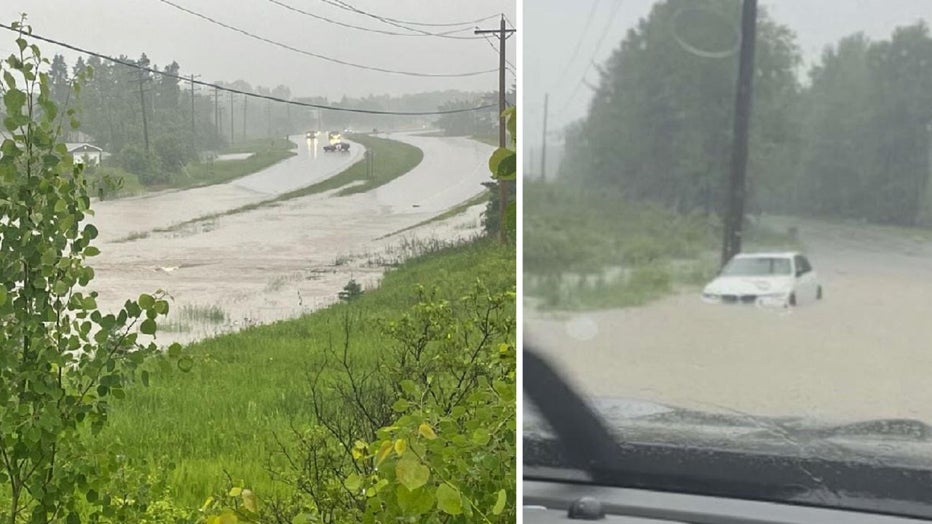'Life-threatening' flash flooding possible along Minnesota's North Shore
Flooding at Bluefin Bay on Lake Superior in Tofte
Videos taken by Jayson Hansen show the extent of flooding at Bluefin Bay on Lake Superior in Tofte, Minnesota, Tuesday night amid severe storms that included heavy rainfall on Minnesota's North Shore.
DULUTH, Minn. (FOX 9) - The National Weather Service is warning of "life-threatening" flash floods along Minnesota's North Shore as the region is hit with severe storms.
The warning is the highest warning level for flash floods.
See any damage? You can click here to submit photos to FOX 9.
The topography of the North Shore, with hills flooding into the lake, makes the risk from the heavy rains even more dangerous and will likely lead to washed-out roads.
The St. Louis County Sheriff reports more than five inches of rain had reportedly fallen north of Virginia, Minn. during the storms. The sheriff is reminding drivers not to risk driving through flooded roads.
Tips for staying safe during flash flood warnings

Hwy 169 flooded in Hibbing, MN from Derrick Pleshe (left) and flooding in Tower, MN from Ryan Belt (right).
When flash floods are issued for your area, the National Weather Service says citizens should immediately move to higher ground.
They recommend the following:
- Get out of areas subject to flooding. This includes dips, low spots, canyons, washes, etc.
- Avoid already flooded and high-velocity flow areas. Do not attempt to cross flowing streams.
- If driving, be aware that the road bed may not be intact under flood waters. Turn around and go another way. NEVER drive through flooded roadways!
- If the vehicle stalls, leave it immediately and seek higher ground. Rapidly rising water may engulf the vehicle and its occupants and sweep them away. Remember, it's better to be wet than dead!
- Be especially cautious at night when it is harder to recognize flood dangers.
- Do not camp or park your vehicle along streams and washes, particularly during threatening conditions.
- If advised to evacuate, do so immediately.
- Move to a safe area before access is cut off by flood water.
- continue monitoring NOAA Weather Radio, television, or emergency broadcast station for information.
- Avoid areas subject to sudden flooding.
- If you come upon a flowing stream where water is above your ankles, STOP! Turn around and go another way.
- Do not attempt to drive over a flooded road. The depth of water is not always obvious. The road bed may be washed out under the water, and you could be stranded or trapped.
- Children should NEVER play around high water, storm drains, viaducts, or arroyos.
- If fresh food has come in contact with flood waters, throw it out.
- Boil drinking water before using. Wells should be pumped out and the water tested for purity before drinking. If in doubt, call your local public health authority.
- Seek necessary medical care at the nearest hospital. Food, clothing, shelter, and first aid are available from the Red Cross.
- Do not visit disaster areas. Your presence might hamper rescue and other emergency operations.
- Electrical equipment should be checked and dried before being returned to service.
- Use flashlights, not lanterns, torches or matches, to examine buildings. Flammables may be inside.

